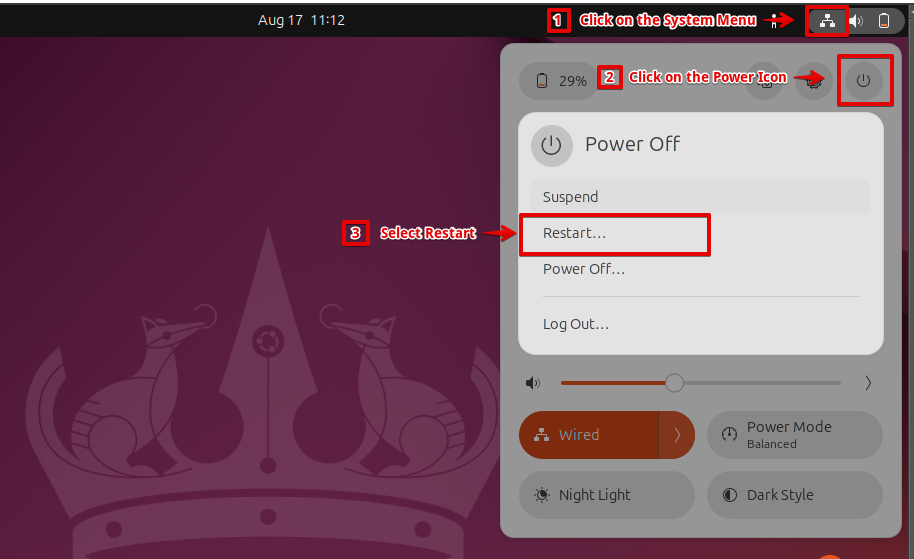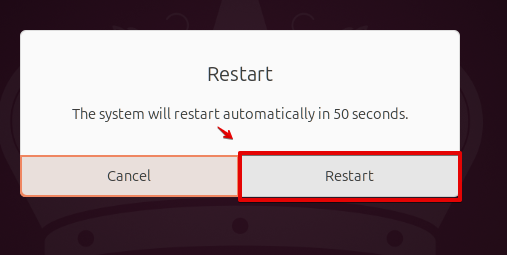Get ready to learn the best practices for restarting Ubuntu 24.04 LTS in this informative guide. Whether you’re troubleshooting issues, applying updates, or managing your system, understanding how to restart your Ubuntu system effectively is essential. This guide will walk you through different methods to restart Ubuntu 24.04 LTS, ensuring you choose the best approach for your needs.
In system management, a proper restart can be a vital step in resolving issues, applying changes, or maintaining the overall health of your system. Unlike simply shutting down and turning the system back on, a restart ensures that your system restarts its services and applications in a controlled and orderly manner, helping to prevent data loss and ensuring that updates are properly applied.
How to Restart Ubuntu 24.04 LTS
Restarting Ubuntu can be done using various methods, depending on whether you’re working in a graphical user interface (GUI) or a command-line interface (CLI). This guide will cover the following key methods:
Restarting Using the Graphical Interface (GUI)
Restarting from the Command Line
- Using the shutdown Command
- Using the reboot Command
- Using the systemctl Command
- Using the poweroff Command
- Using the halt Command
- Using the init Command
By familiarizing yourself with these methods, you can restart your Ubuntu system in any scenario.
Restart Ubuntu Using the Graphical Interface (GUI)
For users who prefer a graphical interface, restarting Ubuntu is straightforward. Follow these steps:
Step 1: Access the System Menu
Locate the system menu in the top-right corner of your screen by navigating there.
Step 2: Choose Restart
From the drop-down menu, choose Restart by clicking the power icon.

Step 3: Confirm Restart
A confirmation dialog will appear. Click Restart to proceed.

This approach is especially useful for those who are not familiar with command-line operations or prefer visual prompts.
Restart Ubuntu from the Command Line
For more control and flexibility, the command line provides powerful options for restarting your Ubuntu system.
Using the shutdown Command
The shutdown command is versatile and allows you to schedule a restart.
1. Immediate Restart:
This command restarts the system immediately.
sudo shutdown -r now

2. Scheduled Restart:
sudo shutdown -r +10
This command schedules a restart after 10 minutes.
The -r option stands for restart, and you can replace +10 with any number of minutes you wish to delay the restart.

3. Restart at a Specific Time
Using this approach, you can also plan a restart for a particular time:
sudo shutdown -r 22:00
This command will restart the system at 10:00 PM. This technique allows for planning restarts at off-peak times.

Tip: Scheduling a restart can be particularly useful if you need to give users time to save their work or if you’re running a script that needs to finish before the restart.
4. Cancelling a Scheduled Shutdown
If you’ve arranged for a shutdown at a later time but later realize it’s no longer needed, you can quickly abort that action. To do this, simply execute the shutdown command with the -c option:
sudo shutdown -c

Tip: Before canceling, ensure that no critical tasks depend on the scheduled shutdown to prevent any unintended disruptions.
Using the reboot Command
The reboot command is a simple command that you can use to restart the system immediately.
sudo reboot

The reboot command is equivalent to shutdown -r now and is often used for its simplicity.
Tip: This command is particularly useful in scenarios where you need to restart the system quickly, such as after applying critical updates or making changes that require a reboot.
Using the systemctl Command
Using the systemctl command offers a flexible and up-to-date approach for an immediate system restart.
sudo systemctl reboot

Tip: This command is particularly useful when you need a clean restart while ensuring that all system services are gracefully stopped and restarted, such as after significant configuration changes or during routine maintenance.
Using the poweroff Command
The poweroff command is primarily used to shut down the system, but it can also be utilized for restarting by combining it with a flag.
sudo poweroff –-reboot

Tip: This command is particularly helpful in situations where a clean power cycle is needed, such as when troubleshooting hardware issues or after performing maintenance that affects the system’s power state.
Using the halt Command
The halt command is primarily used to stop all processes and halt the system, it can also be used to restart.
sudo halt -–reboot

Tip: Use this command in situations where you want to immediately stop all processes and reboot the system, such as during troubleshooting or when a quick restart is needed after making system changes.
Using the init Command
This command initiates an immediate reboot of the system
sudo init 6
The number 6 in this command indicates that the system should switch to runlevel 6, which corresponds to a restart.

Tip: The init command is useful in scenarios where traditional commands are preferred or required for scripts and automation. This command is part of the older SysVinit system, which has largely been replaced by systemd in modern Ubuntu versions, but it remains available for compatibility.
Conclusion
Restarting Ubuntu 24.04 LTS is a fundamental task that can be accomplished through various methods, each offering different levels of control and flexibility. Whether you prefer using the graphical interface or the command line, this guide has provided you with the tools and knowledge to restart your system effectively.
For a straightforward and easy-to-use restart, you can opt for the graphical user interface (GUI) method. If you require more control and flexibility, consider using commands like shutdown, reboot, or systemctl. Additionally, for particular situations where traditional or specialized approaches are necessary, you can utilize init or halt commands. By incorporating these methods into your system management routine, you’ll be well-equipped to maintain the stability and performance of your Ubuntu system, ensuring that updates are applied correctly, and any issues are resolved promptly.
Keep visiting Linux World.




